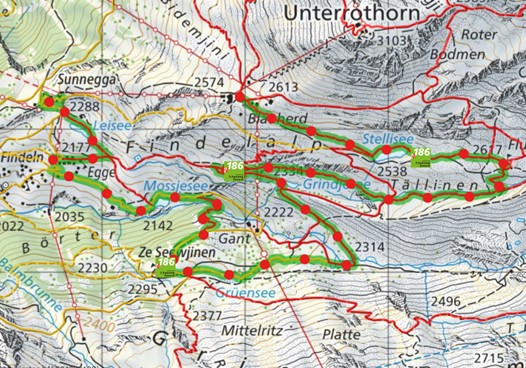DAY 7 (21st September 2022)
Zermatt (Sunnegga and 5-Lake Trail)
Montreux was only a one-night stopover for us, as we would be heading to Zermatt for the next two nights. We packed up again, and boarded our train to Zermatt, via Visp. Unfortunately for BL, somewhere along the journey, he was pickpocketed, and lost some money (thankfully wasn’t too much), but the experience was not pleasant. It may have happened at Visp, where there was a slightly bigger crowd at the station, and we had luggage in our hands.
Oh well, it happens…
We tried not to let that spoil the rest of the day and in fact the rest of the trip. On this day, we would be going on one of the two famous locations in Zermatt – a short hike along 5-Lake Trail.
Zermatt
Zermatt is a car-free town, located at the foothills of the tallest mountains of the Alps (many of the alpine four-thousanders, meaning mountains above 4000m in height, are in this area). This town has less than 6,000 permanent residents, and many times more the number of tourists, but that should be expected. Its main attraction, the majestic Matterhorn, can be clearly seen on a cloudless day from almost anywhere in Zermatt, while the surrounding winter sporting venues are said to be fantastic, and attracts even bigger crowds during the colder months.
Our train ride was about two-and-a-half hours with just a brief transit at Visp. When we got to Zermatt, we made a beeline to our AirBnb unit. There are many more chalets, hotels, AirBnb apartments and homestays in Zermatt than there are residential homes. Almost everywhere you look in the town centre is for tourists! After checking in to our AirBnb at the Pasadena Building, we left for our adventure of the day.
Now We Know
In April and May 1991, two massive rockslide events occurred near the village of Randa, just a few kilometres outside of Zermatt, blocking the rail and road access to Zermatt. The rocks also dammed a section of the Mattervispa River, which caused Randa to be flooded, damaging property and killing livestock, though no one was hurt. While on the train, we passed by a structure which had markings of how high the water level was in the aftermath of the rockslide event. New roads and new railway connections were subsequently constructed to bypass the rockslide area.
Even now, the rocks above are still inching slowly down the surrounding mountains, but the Swiss government has since placed many monitoring stations to alert the residents in case of danger.
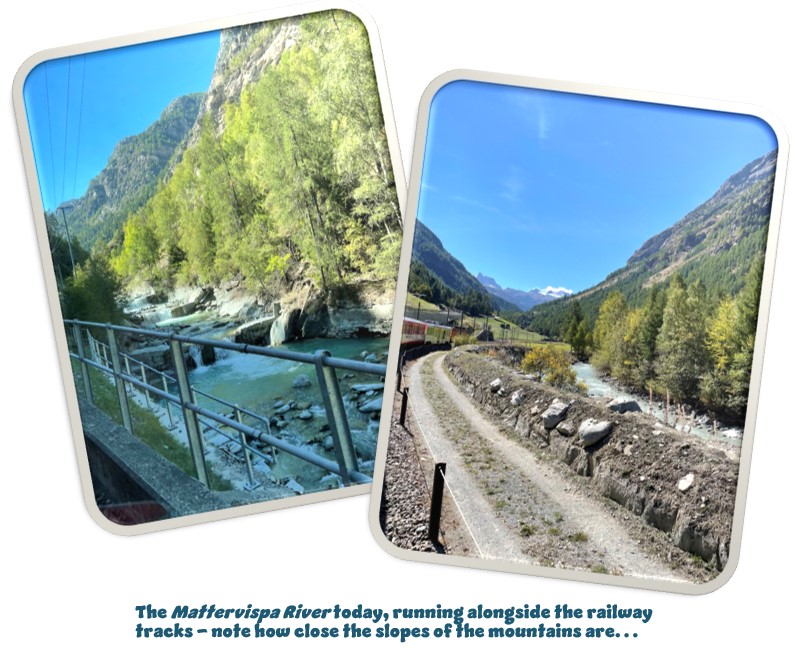
Sunnegga
A short walk from town, is the funicular station to Sunnegga, which is just a collection of a few buildings including the cable car station to Blauherd. Depending on how you want to tackle the 5-Lake Trail, Sunnegga could be the starting point or the end point. Of course, if you don’t mind walking uphill, then by all means start at Sunnegga! (Bro Ray: The elevation gain is actually not much, so it is doable.)
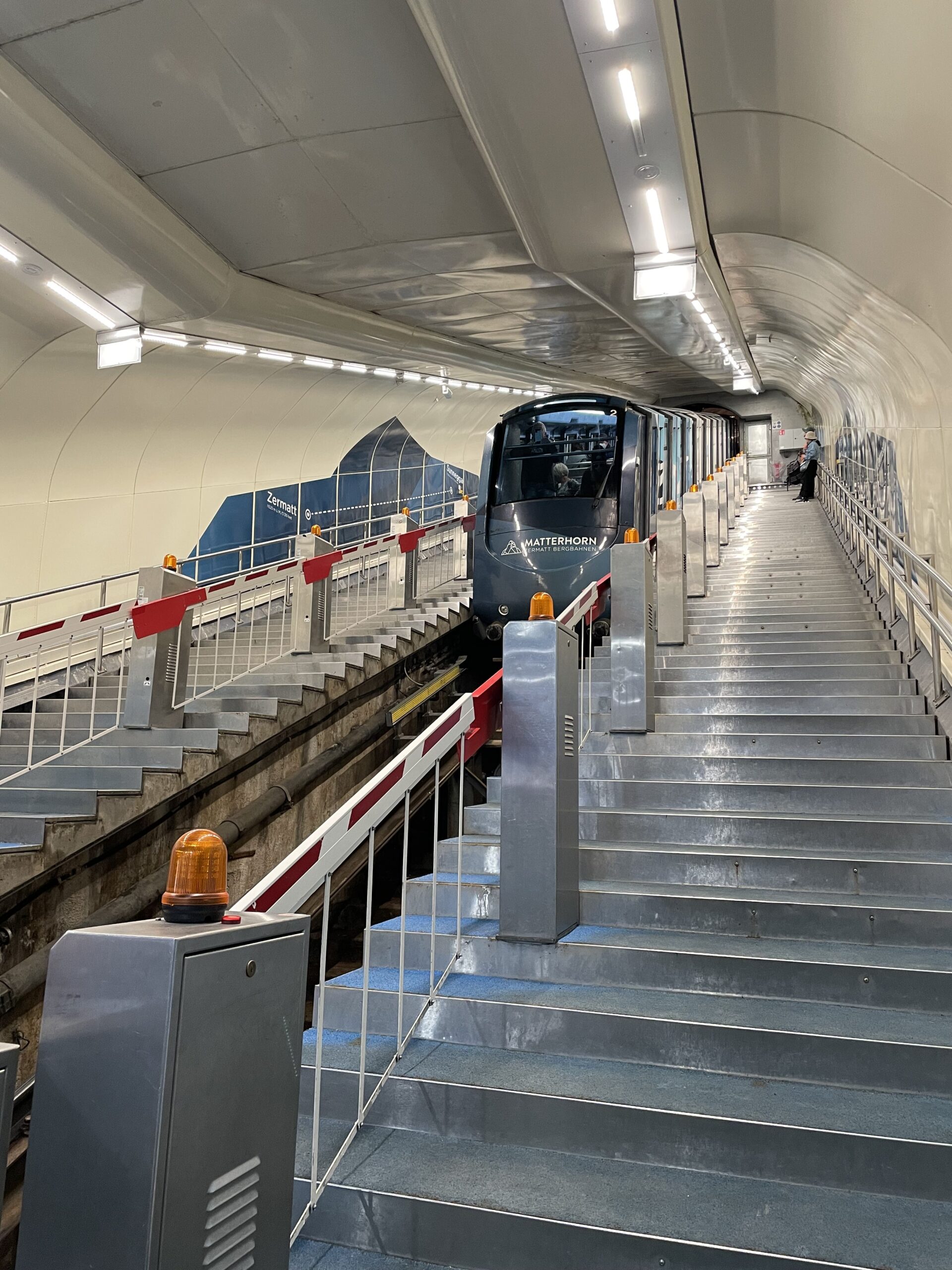
There is an open-air terrace restaurant at the Sunnegga station, with a perfect, unobstructed view of Matterhorn in the distance. Quite the place to get a few snaps in. We walked around a little before climbing into the cable car for the 5-minute ride up to Blauherd.
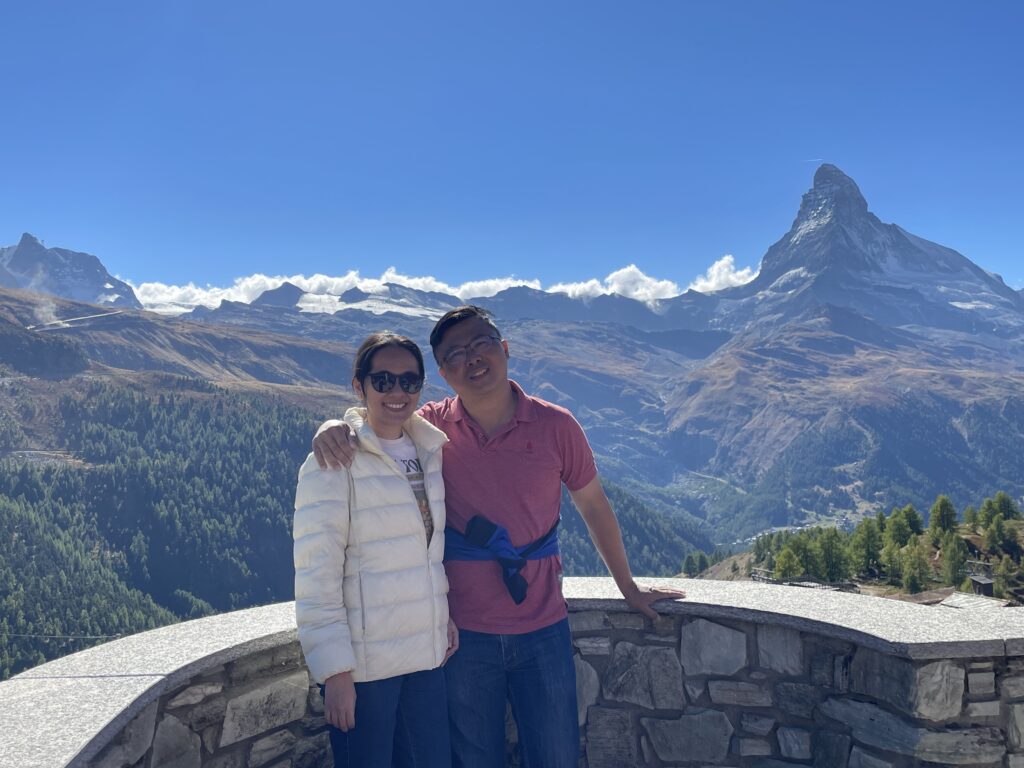
Blauherd and the 5-Lake Trail
Blauherd has even fewer buildings than at Sunnegga, and it is here that the 5-Lake Trail (or 5-Seenweg) starts, so named because the 9.7km trail winds its way past 5 alpine lakes, namely Stellisee, Grinjisee, Grunsee, Moosjisee and Leisee, and ends at Sunnegga. The charm of this trail is the opportunity to capture even more photographs of Matterhorn and at the aforementioned lakes, it is possible to take photos of the reflection of Matterhorn off the surface of the lakes. The lake would have to be absolutely still for the perfect mirror image, though, and that’s normally only in the mornings. We were a little too late for that.
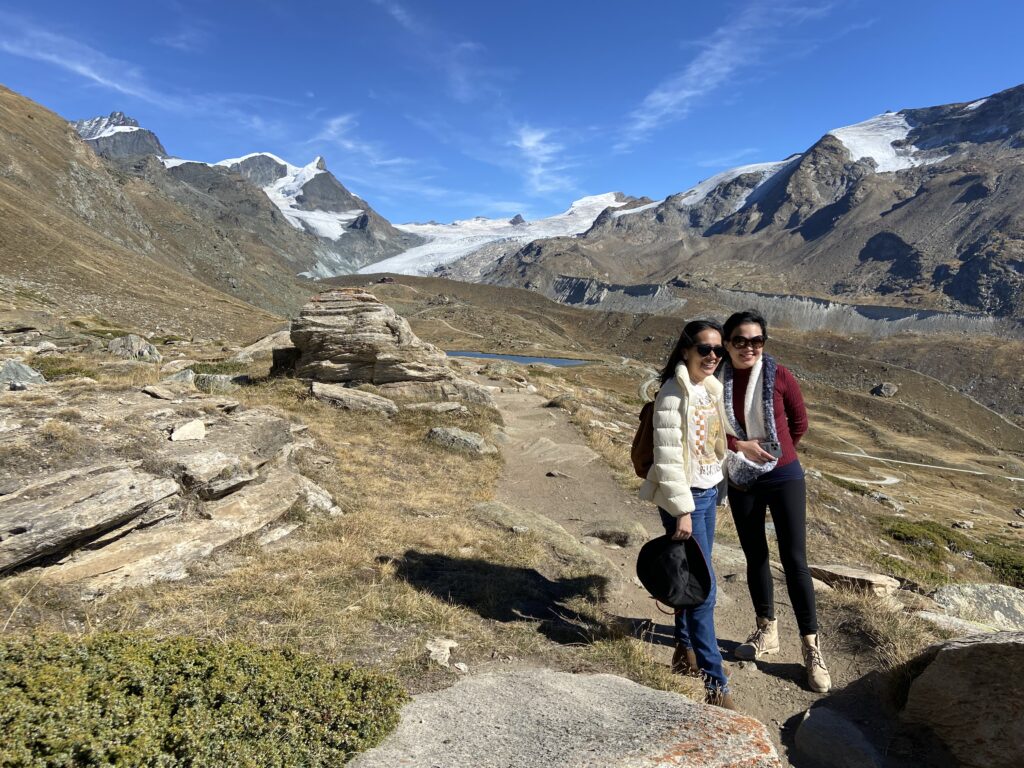
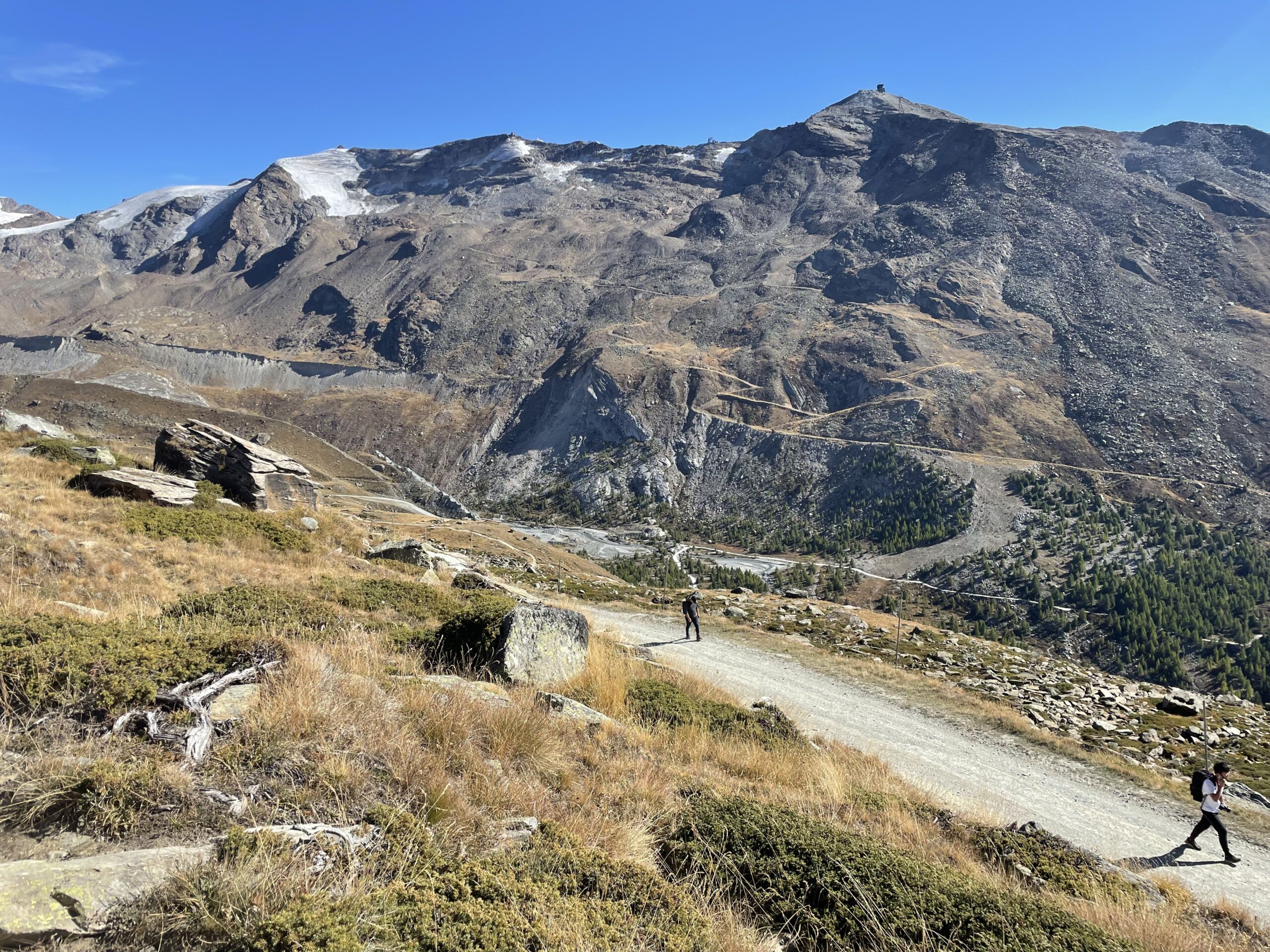
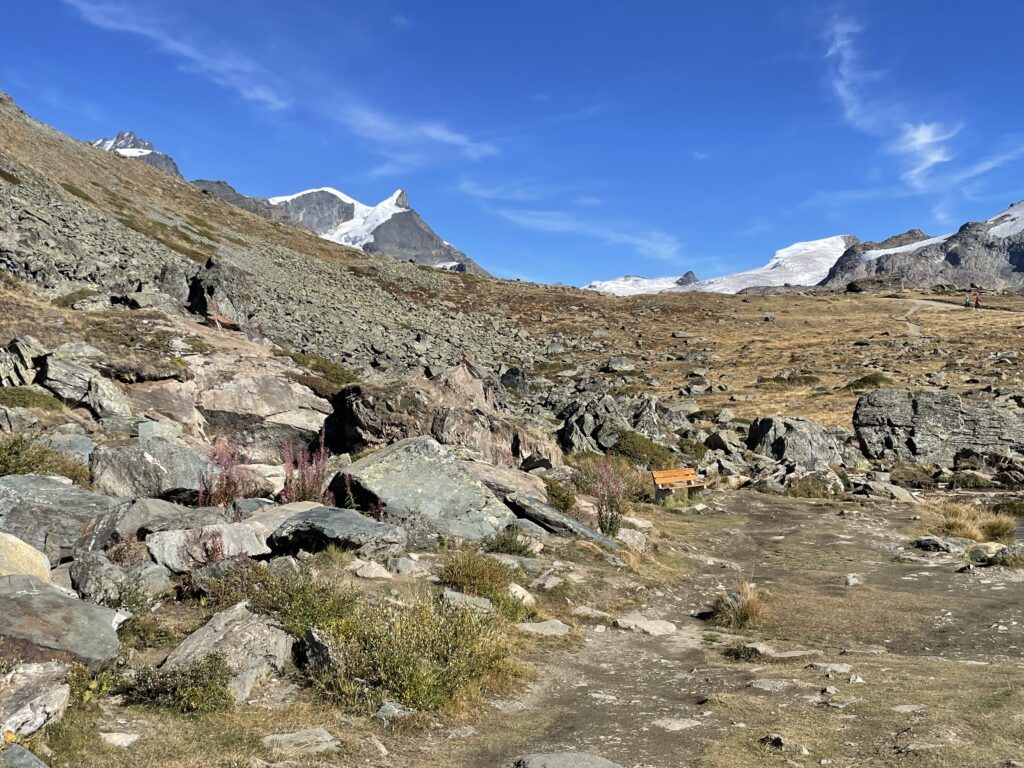
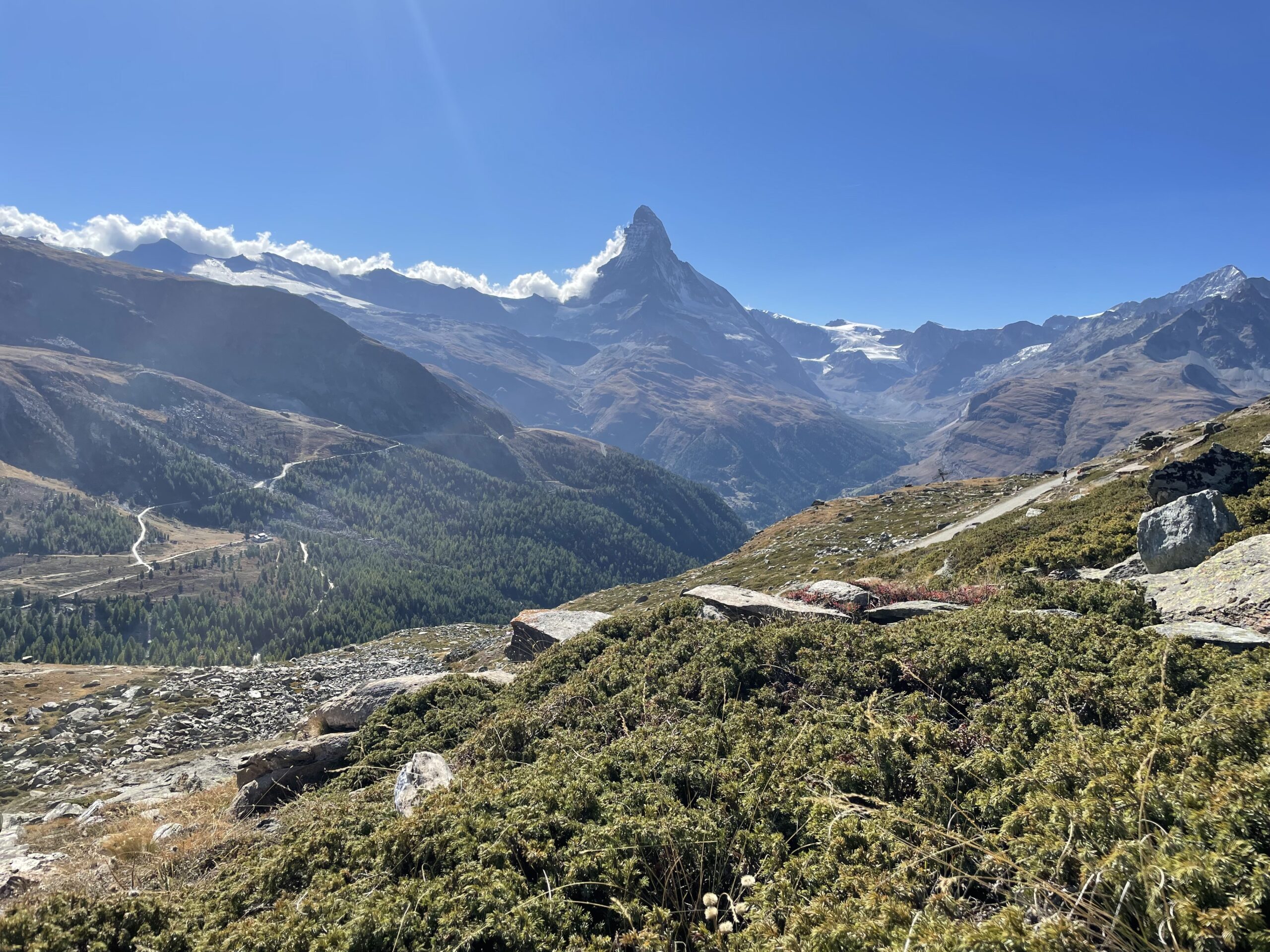
We decided that we would not walk the entire trail, but just down to Stellisee, the biggest of the 5 lakes, where the reflection of Matterhorn is said to be the best. In actual fact, the walk wasn’t that far – my guess is less than 700m. So, it is easily accessible for most people, I imagine. No swimming is allowed at Stellisee, but you can at Grunsee and Leisee.
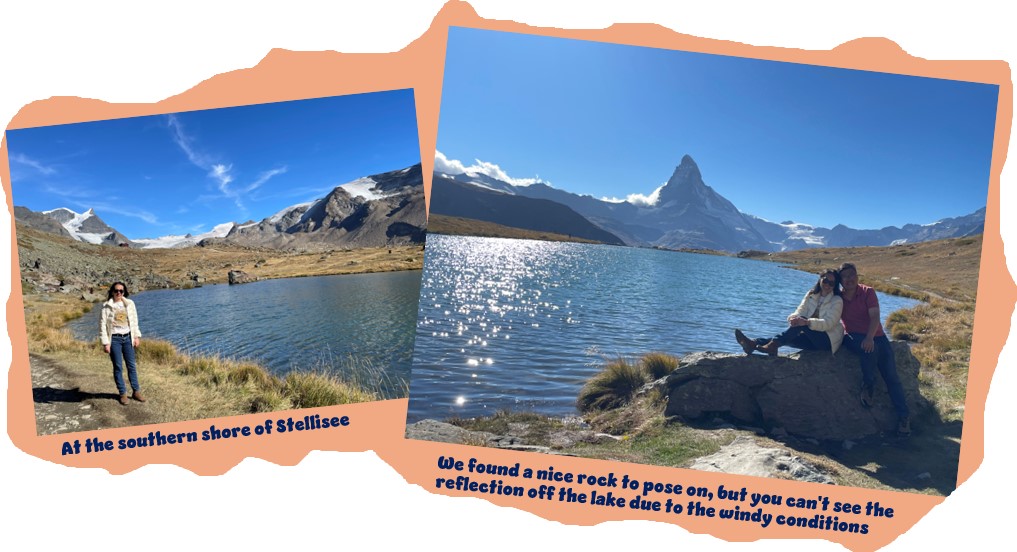
Downtown Zermatt
We retraced our steps back to Zermatt and it was already late afternoon when we arrived. We decided to walk around and explore what Zermatt had to offer – a quiet, charming little town, with an overwhelming number of tourists. The buildings in the downtown area are touristy by design, without being gawdy or overpowering. There were also many restaurants offering different fare and souvenir shops.
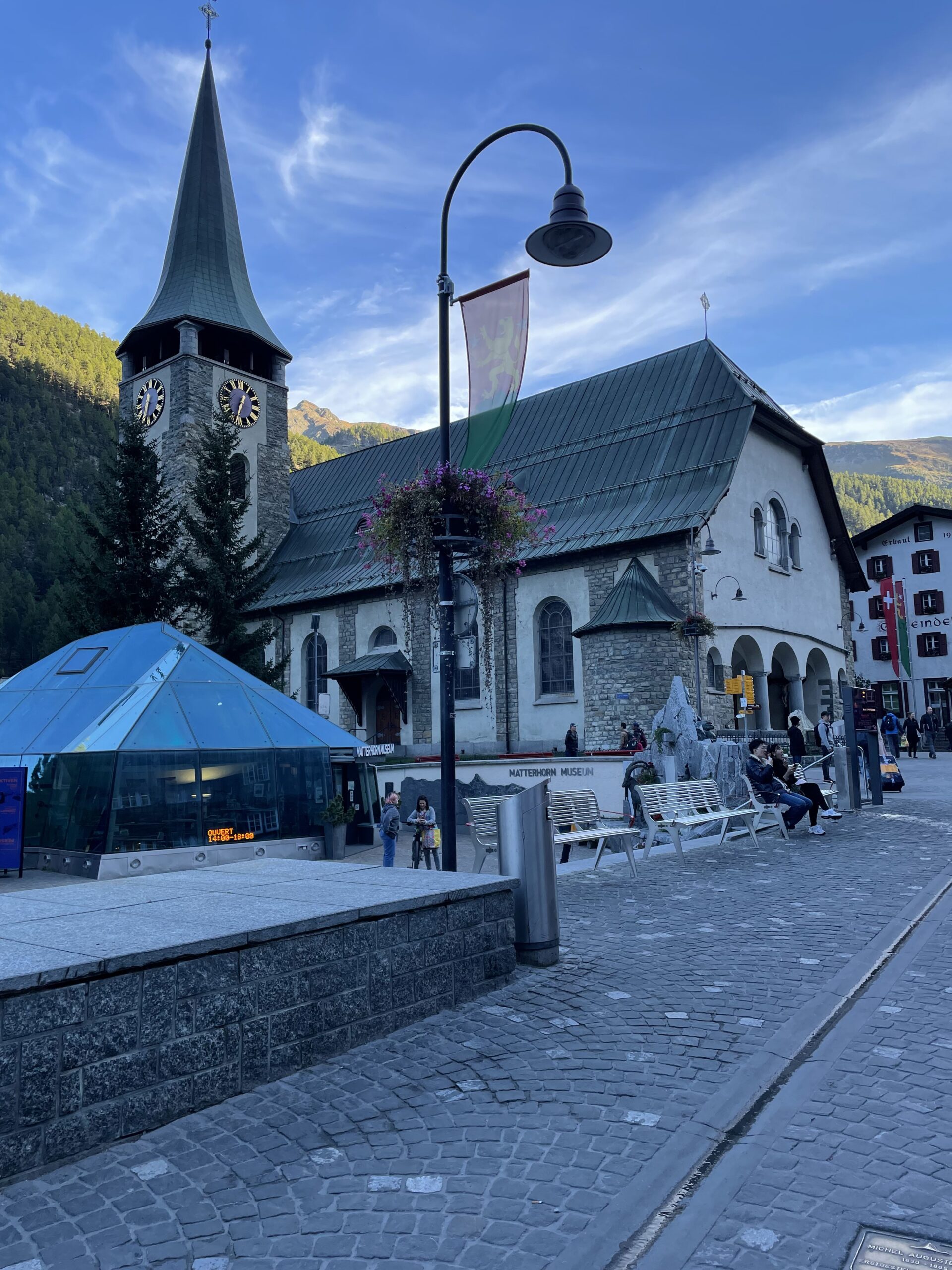
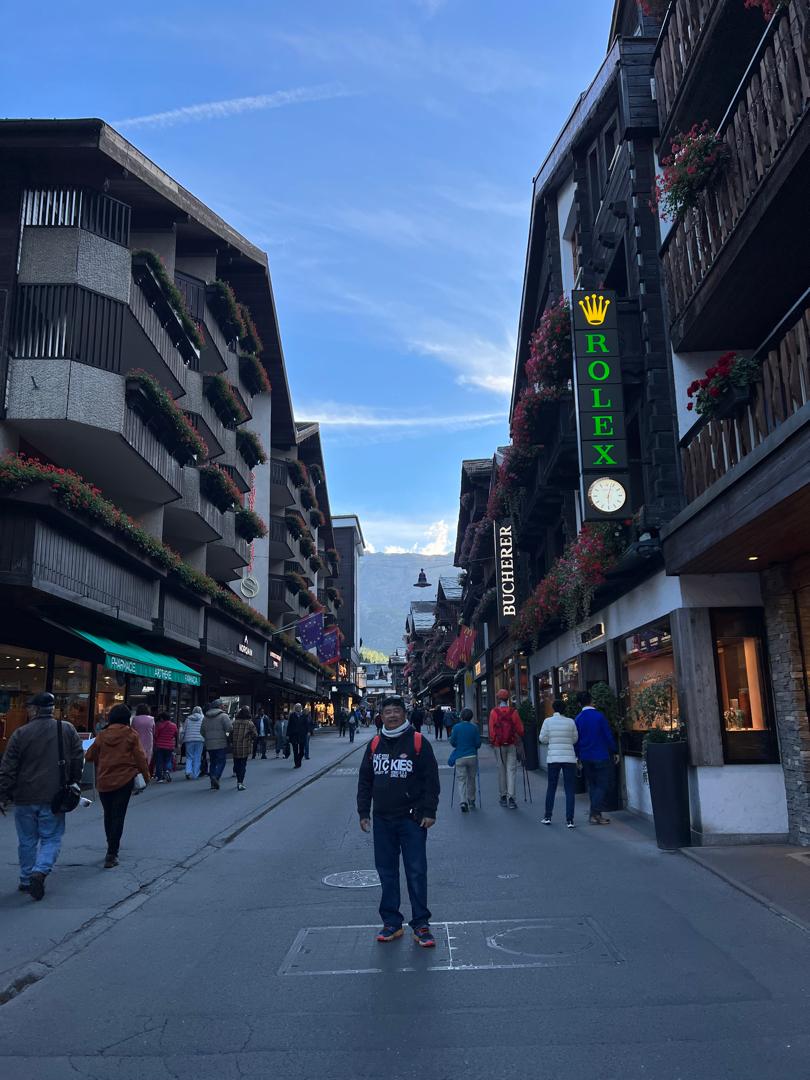
We decided that dinner was going to be “home-cooked”, since our cozy AirBnb unit was spacious and had a kitchen for preparing food. We bought some food in town before heading back.
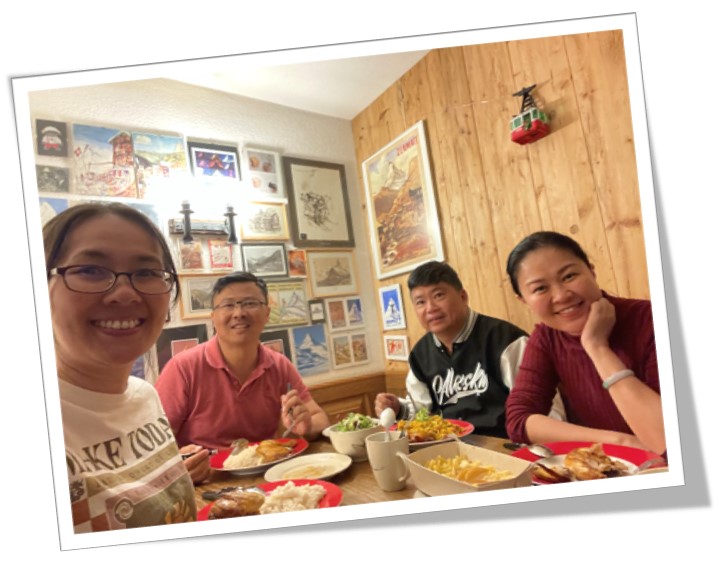
Summary for Day 7
The beginning of the day was spoilt by the pickpocketing incident but thank God, it got better as the day progressed. The 5-Lake Trail is one of the two major attractions of Zermatt, and we would be heading up the other one the next day, to Gornergrat.
As you can see from the map below, we hardly did 10% of the total 5-Lake Trail distance. To be fair, we only arrived at Blauherd at 3:30pm – would have been quite an ask for our tired knees to make it back to Sunnegga before sunset.
